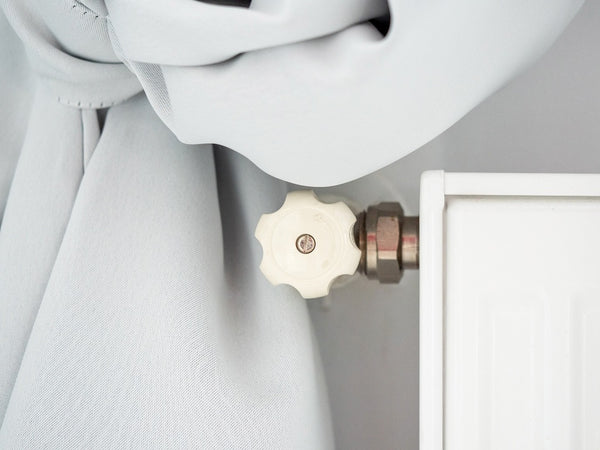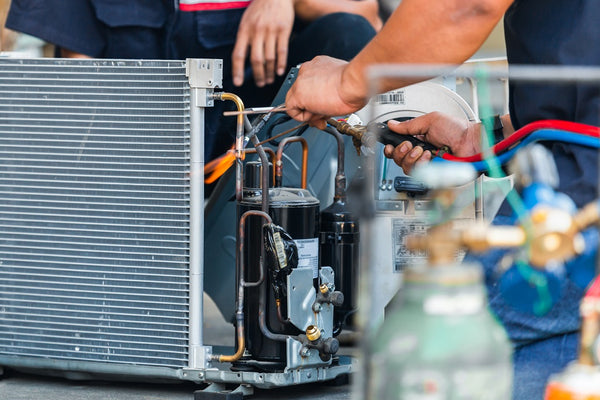
Moisture and humidity are both similar in the sense that they both signify the presence of evaporated liquids, most commonly water, in an environment. Both are present in trace amounts but the damage that unchecked moisture or humidity can cause to a home can be irreparable. This is why monitoring them in our homes is so crucial.
These 2 elements, when in excess, are a threat to our homes. Too much moisture or humidity can lead to mildew, and in extreme cases, too much condensation in wooden structures can cause these buildings to collapse altogether.
How Do I Measure Humidity Level?
High levels of moisture and humidity in a home can cause damage in the long run. As we mentioned previously, moisture in a home can lead to mildew and this can have dire consequences on people living with asthma or other respiratory illnesses.
There are visual cues that can signal high or unacceptable levels of humidity in a home. There are several manifestations that can indicate high moisture or humidity such as: mildew in bathrooms, condensation on windows during the colder months, moldy walls, peeling paints inside and outside the house, cracking walls, and excessive build-up of dust mites and other allergens.
A hygrometer is commonly used to measure humidity in an environment, this device uses electrical signals with room humidity sensors to measure and determine the level of humidity in a specific place. This device will provide a reading of the humidity level but if your levels are higher than acceptable then you will need to take additional steps to ensure your home’s good air quality.
There are many preventive and proactive steps you can take, and we’ll guide you on how to lower humidity in your house if it is too high.

What If There’s Too Much Humidity?
When there is too much humidity in a room, it can cause a vast array of issues, but as previously mentioned there are several steps that can keep excessive moisture at bay. Why live in an unhealthy and stale environment when there are options and ways to live a better life.
Find and Fix Leaks
One of the most important steps is inspecting your home for leaks in pipes or faucets. This can directly lead to a high level of moisture in a home. Once you have found your leaky pipes or faucets then you can fix them by simply wrapping them in insulators to stop the leaks.
Don’t Take Hot Showers
No! Not the hot showers! Yes, unfortunately, hot showers invite humidity, which is clearly visible in the condensation that accumulates on your bathroom mirror. There is nothing more comforting than a hot shower on a winter night, but this will cause your home’s humidity level to rise, so slightly cooler showers are recommended.
Take Your Laundry Outside
We all use drying racks for clothing that isn’t suitable for the dryer, especially during the winter months when we can’t hang them outside. But it is important to be mindful that these drying racks and the wet clothes we hang on them cause a significant amount of moisture and humidity.
Get a Dehumidifier
Dehumidifiers are a wonderful device that will bring you dry and cool air and will even allow you to not use your air conditioner as much during the summer months, which will in turn significantly reduce your energy bills. Dehumidifiers are a great way to control humidity in a home.
Get an Air Conditioner
Air conditioners are not the same as dehumidifiers, however, they can aid in the reduction of the humidity in a home. They remove the moisture from the air which is then absorbed and released through the drains of your AC unit.
Move Your House Plants
Plants connect us to nature, and we love decorating our homes with them. However, too many plants in one room can increase moisture in that specific room. The trick here is to strike a balance and spread your plants out throughout different rooms to ensure your humidity level doesn’t rise.
Use Exhaust Fans More Often
Stove fans and bathroom exhaust fans were put in place especially to reduce the humidity level in those rooms. Boiling water and hot showers are common culprits of excess humidity in these rooms. When cooking or showering, it is recommended to make use of exhaust fans.
What If The Moisture Level Is Too Low?
Finding the right balance in everything in life can be a challenge. When moisture is too low, it can cause chapped lips, cracked hands, overall dry skin, an itchy nose, and even a scratchy throat. To keep moisture at a balanced level there are a few things you can do.
Try Natural Evaporation
There are many ways to use natural evaporation to increase moisture. Hanging wet towels can increase moisture. In addition, you can fill decorative bowls and place them in random places in your apartment such as shelves or above radiators or windowsills to moisturize a room.
Get a Portable Humidifier
Portable humidifiers can be another great solution. These devices are small but powerful to help you raise the moisture level in your home. They are easy to take from room to room, however, every 24 hours they must be refilled to ensure they function properly.
Set Up a Whole-House Humidifier
Whole-house humidifiers are an important addition to your HVAC system. This is a great way to control humidity and moisture in your home. This is a centralized way to ensure the best air quality in your home. HVAC humidifiers work with a humidistat which will allow you to always be in control of the humidity level in your home.
Conclusion
Regardless of whether you live in a home with too much humidity or not enough, it is time to remedy this situation and find the balance that will allow you to live in harmony with your home. Control humidity in your house with sensor collections which can aid you in achieving that balance all homeowners crave.


